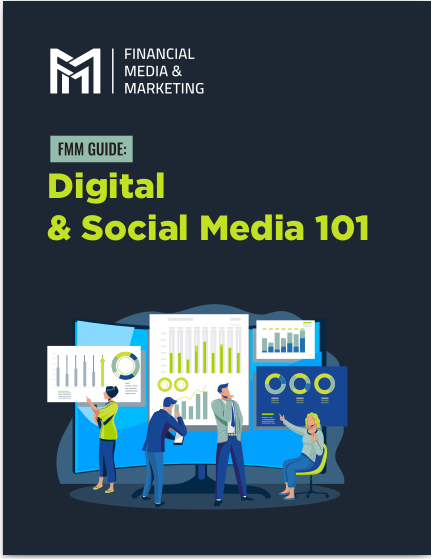Key Takeaways
- Utilizing essential tools can significantly enhance the efficiency and effectiveness of financial advisors.
- Key tools include financial planning software, CRM systems, portfolio management tools, and communication platforms, all of which contribute to improved client service and business growth.
Must-Have Tools for Financial Advisors: 7 Essential Tools for Success
In today’s fast-paced and technologically driven world, financial advisors must leverage various tools to stay competitive, improve efficiency, and deliver exceptional service to clients. The right tools can help streamline workflows, enhance client relationships, and optimize portfolio management. This article explores seven essential tools that every financial advisor should use to achieve success.
Financial Planning Software
Financial planning software is the backbone of any financial advisor’s toolkit. These programs allow advisors to create comprehensive financial plans, perform detailed analyses, and provide clients with actionable insights. Here are some key benefits and features of financial planning software:
Comprehensive Analysis
Financial planning software enables advisors to perform detailed analyses of their clients’ financial situations. This includes evaluating income, expenses, assets, liabilities, and future financial goals. With robust analytical capabilities, advisors can identify potential issues, opportunities, and develop tailored strategies.
Scenario Modeling
One of the standout features of financial planning software is scenario modeling. This tool allows advisors to create multiple financial scenarios to see how different variables impact a client’s financial future. For example, advisors can model the effects of changes in investment returns, retirement age, or spending patterns, helping clients make informed decisions.
Integration with Other Tools
Many financial planning software programs integrate seamlessly with other tools, such as CRM systems and portfolio management platforms. This integration ensures that all client data is centralized and easily accessible, facilitating a more cohesive and efficient workflow.
Enhanced Client Presentations
Financial planning software often includes features for creating visually appealing and easy-to-understand presentations. Advisors can use charts, graphs, and reports to illustrate complex financial concepts, making it easier for clients to grasp the details of their financial plans.
Customer Relationship Management (CRM) Systems
Customer Relationship Management (CRM) systems are crucial for managing client interactions and maintaining strong relationships. A robust CRM system helps advisors organize client information, track communication, and personalize their services. Here are the main benefits of CRM systems for financial advisors:
Centralized Client Information
CRM systems store all client information in a centralized database, including contact details, communication history, and financial data. This centralized approach ensures that advisors have a complete view of each client’s relationship and can quickly access relevant information when needed.
Task Management and Automation
CRM systems come with task management and automation features that help advisors stay organized and efficient. Advisors can set reminders for follow-up calls, meetings, and important deadlines. Automation features can also streamline routine tasks, such as sending birthday greetings or follow-up emails, freeing up time for more strategic activities.
Personalized Client Service
With CRM systems, advisors can segment their client base and deliver personalized services. For instance, advisors can tailor communication and services based on clients’ financial goals, preferences, and life stages. This personalized approach enhances client satisfaction and loyalty.
Improved Compliance and Reporting
CRM systems help advisors stay compliant with regulatory requirements by providing tools for tracking client interactions and documenting advice. Additionally, CRM systems can generate reports for internal use or regulatory submissions, ensuring that advisors meet compliance standards.
Portfolio Management Tools
Portfolio management tools are essential for managing and optimizing client investments. These tools provide advisors with the ability to monitor portfolio performance, analyze investment strategies, and rebalance portfolios as needed. Here’s why portfolio management tools are indispensable:
Real-Time Portfolio Monitoring
Portfolio management tools offer real-time monitoring of client portfolios, allowing advisors to track performance, asset allocation, and market movements. This real-time insight enables advisors to make timely decisions and respond quickly to market changes.
Performance Analytics
These tools provide in-depth performance analytics, helping advisors evaluate the success of investment strategies. Advisors can assess metrics such as returns, risk, and correlation, gaining a clear understanding of how each investment contributes to the overall portfolio.
Rebalancing and Allocation
Portfolio management tools streamline the process of rebalancing portfolios to maintain desired asset allocations. Advisors can set rebalancing thresholds and automate the process, ensuring that portfolios stay aligned with clients’ investment objectives.
Tax Optimization
Many portfolio management tools include features for tax optimization, such as tax-loss harvesting and efficient asset placement. These features help minimize clients’ tax liabilities, enhancing their overall investment returns.
Communication and Collaboration Platforms
Effective communication and collaboration are key to building strong client relationships and ensuring smooth internal operations. Financial advisors need robust communication and collaboration platforms to stay connected with clients and team members. Here are the top benefits of these platforms:
Secure Messaging
Communication platforms provide secure messaging options, ensuring that sensitive client information is protected. Advisors can communicate with clients via encrypted messages, maintaining confidentiality and compliance with privacy regulations.
Video Conferencing
Video conferencing tools are essential for virtual meetings, especially in today’s increasingly remote work environment. These tools enable face-to-face interactions, allowing advisors to build rapport with clients and discuss complex financial matters in real time.
Document Sharing and Collaboration
Collaboration platforms facilitate easy sharing and collaboration on documents. Advisors can share financial reports, planning documents, and investment strategies with clients and colleagues, enabling collaborative review and discussion.
Integration with Other Tools
Many communication and collaboration platforms integrate with other essential tools, such as CRM systems and financial planning software. This integration ensures seamless workflow and easy access to all necessary information during client interactions.
Conclusion
In the competitive world of financial advising, leveraging the right tools is essential for success. Financial planning software, CRM systems, portfolio management tools, and communication platforms are fundamental to enhancing efficiency, improving client service, and growing your practice. By integrating these tools into your workflow, you can deliver exceptional service, maintain strong client relationships, and achieve your business goals. Continuous evaluation and adoption of new technologies will ensure that you stay ahead in the ever-evolving financial industry.
Contact Information:
Email: [email protected]
Phone: 1949245898
Bio:
Madison Browning holds a Bachelor of Science in Business Management and has extensive experience in leadership roles within notable companies. Currently, Madison serves as a marketing specialist for Financial Media Marketing. With a keen eye for design and a passion for storytelling, Madison is also an avid graphic designer and content writer, consistently delivering compelling and visually appealing content.










